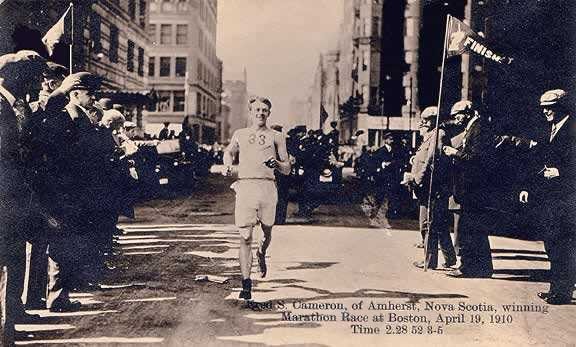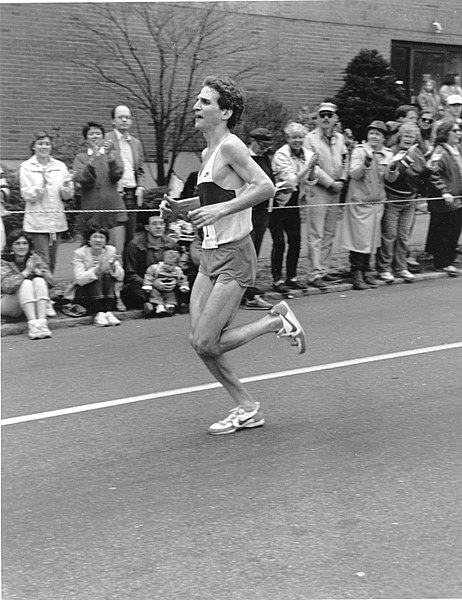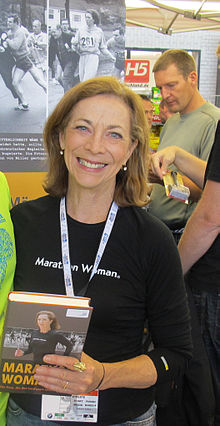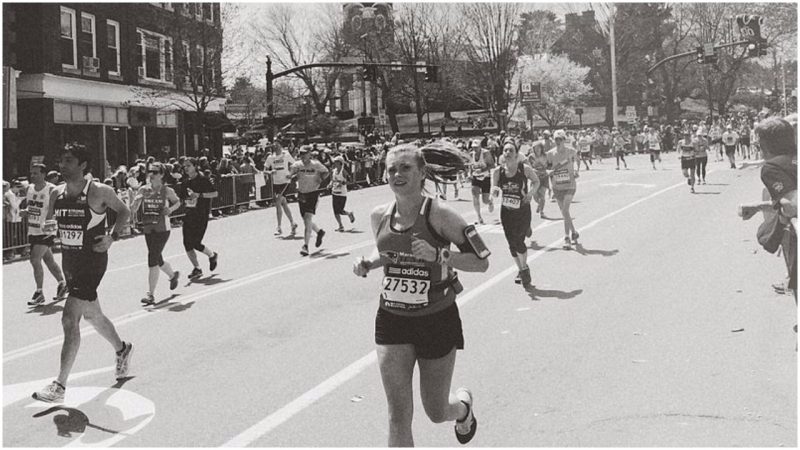It is hard to believe today, when more women run than men. But until 1972, women were prohibited to run the Boston Marathon—the oldest and most prestigious marathon (26.2 miles) in the United States. In 1967, Kathrine Switzer managed to get a bib number for the race by entering as K.V. Switzer and sneaking on to the course in gender-obscuring baggy gray sweatpants.
Even so, when race director Jock Semple spotted her, he tried to wrestle her off the course, shouting “Get the hell out of my race!” Newspaper photographers captured the tussle, Switzer became famous as the “first woman to run Boston,” and the road was paved for women’s eventual admittance to the storied race.
But in fact, there was another woman in that race on that day, who finished about an hour before Switzer. The other woman had also run the Boston Marathon the year before, too, making local newspaper headlines. Though her achievement is not as widely known and celebrated, the true first woman to run the Boston marathon was a 23-year-old called Bobbi Gibb.
When Roberta Louise Gibb Bingay went to the Boston marathon starting line in the village of Hopkinton on April 19, 1966, she had never run a track meet or a road race, much less a full marathon. She had no idea what to expect, but she did know this: she wasn’t supposed to be there. Women were not allowed to run the Boston Marathon. Inspired to try the marathon after watching it one year, she had written to race directors asking for admission; they roundly rejected her. The Boston Marathon was sanctioned by the Amateur Athletics Union, which prohibited women from running farther than 1.5 miles. At the time, women were thought to be physiologically incapable of running 26.2 miles. People truly believed it might cause a woman’s uterus to fall out. So Bobbi Gibb pulled the hood of her sweatshirt up over her blond ponytail and hid in the bushes near the starting line.

At noon, the starter’s gun went off, and around 500 men set off to run the 26.2 miles from Hopkinton to downtown Boston’s Boylston Street. Nervously, Gibb jumped in among them. She wore a brand-new pair of size 6 men’s Adidas sneakers—her first—along with her usual running attire of a black one-piece bathing suit, under her sweatshirt, and her brother’s white Bermuda shorts.
Less than a mile into the race, she heard the male runners talking, as she recounted to Amby Burfoot in his book First Ladies of Running:
“Hey, is that a girl over there?”
“What? No way. Girls can’t run the Boston Marathon.”
But once they ascertained that she was a girl and was running the Boston Marathon, they clustered around her, supportive, protective, telling her not to worry, she was on a public road. She grew warm as she ran and tossed her sweatshirt. There was no denying her gender. Reporters on the press bus noticed. Radio announcers shared the news: There’s a woman running the marathon! Spectators rushed to the course to cheer her on. Gibb didn’t encounter a single hostile moment, she told Burfoot.

She finished the marathon in a time of 3:21:40, good for 124th place. The governor of Massachusetts shook her hand. She was stunned when reporters and photographers mobbed her. Why had she run? “I simply loved running and enjoying the beauties of nature while I ran,” she told Burfoot. “Sure, I hoped to change some of society’s thinking about women, and what we could accomplish. But I didn’t care about beating men. I love men. I didn’t see any reason why men and women couldn’t run together.”
The next day the local newspapers splashed her photo across the front page: Hub Bride First Gal to Run Marathon. It seemed important at the time to note that she had recently gotten married (to a college classmate whom she’d later divorce). Another paper asked her to pose as a “homemaker,” wearing a polka-dot dress and baking brownies. Not that the Boston Athletic Association accepted her feat, issuing a press release that read: “Mrs. Bingay did not run in yesterday’s marathon. There is no such thing as a marathon for a woman. She may have run in a road race, but she did not race in the marathon.”

Gibb ran the Boston Marathon again in 1967—the same year as Switzer. Race officials anticipated her rogue participation and refused to let her cross the finish line, about an hour before Switzer completed the course. She repeated the race, and her unofficial win, in 1968. Now 75 and an artist who still finds inspiration in nature, Gibb continues to run to this day.
“I did my part 50 years ago: I finished the marathon and changed some beliefs about women,” Gibb told Burfoot. “I’m thankful for all that eventually happened in our sport. Most of all, I’m proud and happy that so many women are running today, and continuing to show what we’re capable of.”
